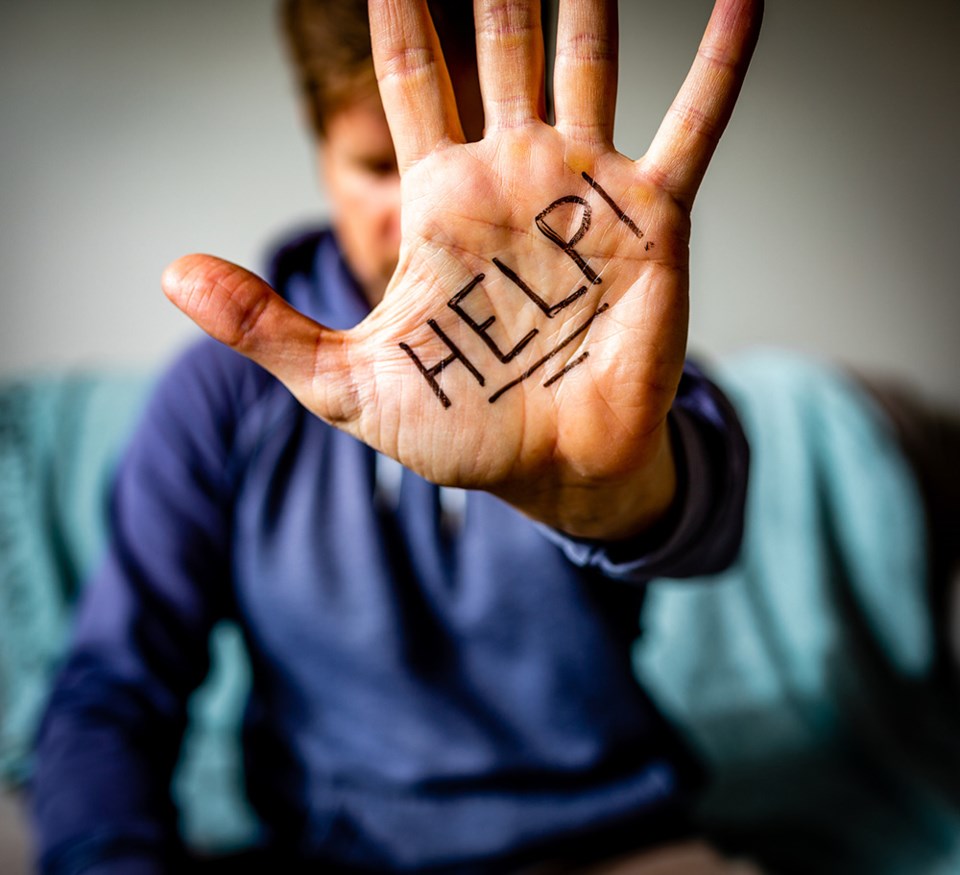Addiction awareness partly comes from an area of education. There is a place for the continuous retelling of facts and figures as part of the response to a societal health crisis where, since a public toxicity health emergency was declared in 2016 in BC, there has been a 75 per cent increase in annual overdose poisonings. To that point, BC paramedics responded to more than 33,500 overdose calls in 2022.
Facts and figures relating to addiction risk become an incessant hum of background noise in an information-littered media-scape. Like the unreadable cascade of neon green, binary code in the film The Matrix, another layer of information becomes part of an excess of well-intentioned messaging overflowing down our screens. Numbers and statistics around addiction in BC have been dangerously normalized and reluctantly accepted.
Maybe the physical disconnect owing to the tectonic shift in communication technology is partly to blame for 30,000 Canadians who have died from opioid-related reasons since 2016. Are we feeling disconnected and lonely more so than ever? Is globalization and empty consumerism leaving vacuous places in our lives which we are filling with poisons such as, for example, a cocaine and fentanyl mix that is far too often lethal for the far too young.
Swiss/British writer and journalist Johan Hari gave an eloquent and convincing TED talk which concluded that the “opposite of addiction is not sobriety, it is connection.” Personally, as someone who romanticized solitude to a point of near self-destruction, his central thesis rang painfully true with me.
The only thing we have in this world is our story, articulation of life through our eyes. My reality and your reality are like red and yellow colours overlapping to make a rich textured orange. I can be sure of my reality and hope to mix into the kaleidoscopic palette of colours which is the bigger show of life.
I can understand my story clearer with the passage of time and use of all possible pharmacologic and behavioural therapies. Also, a timely eight-week stay at Maple Ridge treatment centre has made me luckier than most: an outlier.
Cautiously, I am organizing a life which finds meaning and love without the need for brain-damaging, binge-drinking oblivion. I sometimes wonder exactly what demons were stitched into my fundamental thoughts and beliefs that would allow me to think drinking a 26-ounce bottle of Irish whiskey on a Tuesday work night was necessary? After the first few big glasses, I would black out and find the oblivion I sought, which can only be described as a sloppy, inefficient passive suicide attempt multiple times a week, hoping one day I would not wake up.
Incredibly, I am here full of gratitude, humility and awareness of long-term addiction from a safer perch overlooking the bigger story.
The human animal has a fascinating will to live even in the bleakest of situations. In the darkest moments of the soul, we want to live, connect and even thrive. Some of us just must be patiently taught how to be a productive part of something bigger than ourselves and the pain and empty spaces we carry: physical, psychological or spiritual.
While I was an inpatient at the treatment centre during an unseasonably hot September and October, there was a large homeless encampment just across the six-lane road. When I was trusted to leave the facility, I had to walk through the homeless encampment to get to my destinations.
I know at certain points in life we, as adults, make decisions and must live with the hard consequences. That knowledge did not lessen the heart-wrenching sadness of seeing fellow human beings walking as little more than skin tightly wrapped around a skeleton with open, festering sores exposed to the sunlight. I did not look down at my neighbours across the highway. On the contrary, it took a certain dignity and spirit to live with an advanced disease of chemical addiction in such a behaviourally troubled place, stigmatized and pushed to that outside fringe.
I was one of the lucky ones, getting three healthy meals, a safe bed to sleep in and instruction and counselling from dedicated and qualified counsellors.
We don’t want to see the most troubled among us. Those with severe mental illness and multiple addictions are pushed to the edges of our communities because we know, deep inside, they are us. Our sons and daughters, brothers and sisters and, by the grace of whatever name you give your God, they are you.
The roots of addiction can be genetic predisposition, environmental as in growing up with alcoholic parents, cultural, or, as in my story, an attempt at self-medication for an undiagnosed mental illness gone horribly wrong.
What is wrong with us as a society? Why do we have so much material excess yet close our collective eyes to the poorest and most in need of help and healing?
Transgenerational dysfunction passes crippling addict behaviour through the decades with little chance for those on the receiving end of self-destructive, self-deluding behaviour. Negative transgenerational continuity can include genetic, cultural, social and psychological factors.
We are one of the 20 or so ape species that imitate our parental figures to learn how to navigate the world safely. The family is the primary source of nurturing and socialization. Children of abuse and drug addicted, or alcoholic parents are hobbled at the starting line of life. An unpredictable and unstable early life increases the odds of continuing alcoholism and drug addiction by as much as eight times.
Life is just fundamentally unfair. We need excesses of empathy, understanding, education and love to increase awareness around addiction. Maybe a little optimism and imagination with no one excluded from the dream, as well.
Robert Skender is a qathet region freelance writer and health commentator.
Join the Peak's email list for the top headlines right in your inbox Monday to Friday.



